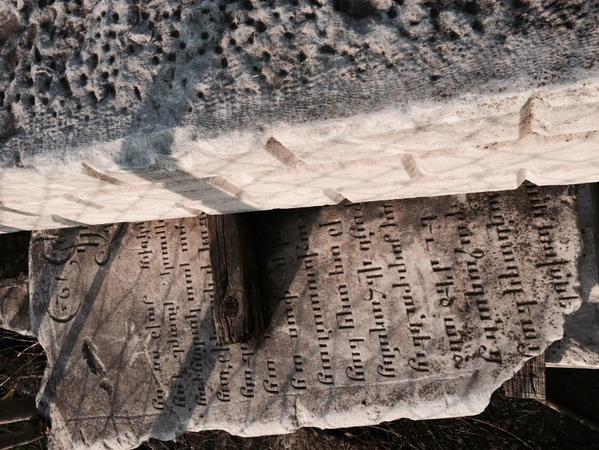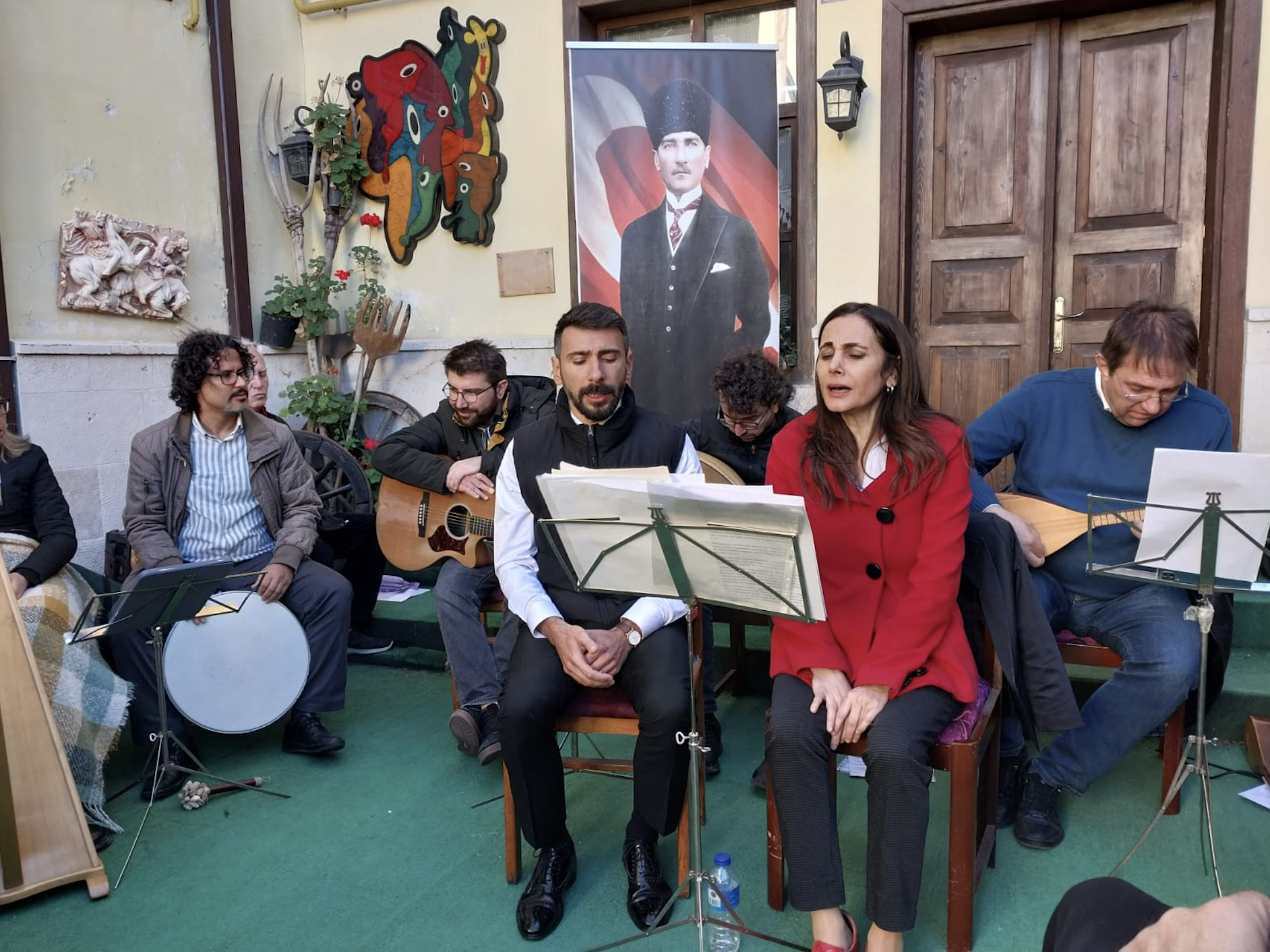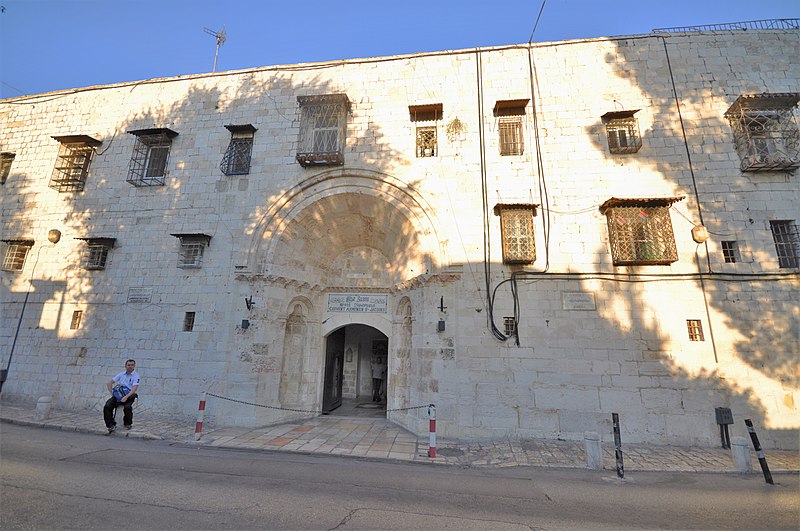The gravestone rendered illegible because it was left beneath Garabet Balyan’s gravestone has been identified as Simon Amira Dadyan’s. Both gravestones have been taken into preservation at the Archaeological Museum to be returned to the Armenian community.
In the past weeks, the gravestone of Garabet Balyan, had been discovered at an Istanbul Metropolitan Municipality construction site in Soğanlık, Kartal; and now the gravestone of Simon Amira Dadyan, a member of another important family of the period, has been discovered beneath it. The gravestones, which were discovered when they came to the attention of a watchful and sensitive father and son who live in Kartal, are being kept at the Archaeological Museum pending return to the Armenian community. The discovery of Garabet Balyan’s gravestone had caused great interest and debate, and the Metropolitan Municipality had assigned a special 24-hour municipal police unit to protect the stones. Following the report published in Agos, the Istanbul Metropolitan Municipality and the Istanbul Provincial Cultural Directorate took action, and Istanbul Archaeological Museum officials took the gravestones from Kartal to the Museum upon the order of the Directorate. An investigation regarding the gravestones has also been launched.
Board will investigate
Speaking to Agos, Istanbul Archaeological Museum officials stated that the gravestones were ‘immovable cultural heritage assets’ and that the Cultural Heritage Preservation Board would carry out an official examination. The report on the stones will be discussed as part of the agenda of the first meeting of the Istanbul 5th Cultural Heritage Preservation Board. The decision of the board will determine the fate of the gravestones.
Patriarchate involved
On the other hand, the fate of other gravestones at the site, which do not have immovable cultural heritage status, remains unclear. The Patriarchate has also become involved regarding the gravestones of the two figures that occupy a highly significant place in the history of Istanbul Armenians. Following the meeting of the architects of the Armenian Architects and Engineers Association (HAYCAR), which is closely following developments, the decision was taken to prepare and submit a petition for the return of the gravestones from the Council of Monuments. The most appropriate institution for the return of the gravestones is considered to be the Beşiktaş Surp Asdvadzadin Armenian Church, to which the expropriated cemetery was affiliated with.
The gravestone of Garabet Balyan, the architect of many important architectural monuments in Istanbul including the Dolmabahçe Palace, has been transferred to the Istanbul Archaeological Museum for preservation. The gravestones were found placed above each other at the Kartal construction site, and the inscription on Garabet Balyan’s gravestone could easily be read because it was at the top of the pile. In addition to Balyan’s gravestone, another gravestone and column pieces were also discovered. When the gravestone was transported to the Archaeological Museum, the inscription of the other gravestone could also be partially deciphered, revealing that it belonged to Simon Amira Dadyan, the Head of the Gunpowder Factory of the Ottoman Empire. Although the part featuring his name was damaged, the inscription on the gravestone of Dadyan, who passed away on 12 March 1832, and was buried at the Beşiktaş Armenian Cemetery, could be read to the extent that it was proved to belong to him.
Historian Elmon Hançer managed to determine both from the word ‘varotabed’, meaning ‘gunpowder factory head’ and the date of death that the gravestone belonged to Simon Amira Dadyan, and stated that the Dadyan Family was a very important family that had initiated industrial development in the Ottoman Empire. Hançer added that both gravestones featured a very special type of calligraphy, and that they were valuable pieces reflecting the aesthetic of the period.
Lost since the 1950s
The cemetery had become derelict over the years after Sultan Abdul Hamid II had ordered the demolition of its walls and its transformation into a garden, and that meant no new burials took place. The cemetery area had been completely sequestrated in the 1950s, and various buildings and the Yıldız intersection that connects to the Bosphorus Bridge are located on the plot today.
Although there aren’t many photographs of the expropriated cemetery, it is known that Garabed Balyan and Simon Amira Dadyan, whose gravestones have been retrieved, were buried here. The gravestones in question have once again shed light on these two Armenian families who had took on important roles in the Ottoman Empire.
Who is Simon Amira Dadyan?
Simon Amira Dadyan, the brother of Hovannes Bey Dadyan, who received the title ‘Bey’ because of his role in the Crimean War, is also known as the founder of the Yeşilköy Armenian Church. Simon Amira was appointed as the head of the Ottoman Gunpowder Factory following the death in 1812 of his father Dad Arakel who had founded the institution, and remained in this position until his death. The inscription on his gravestone also mentions his close friendship with Sultan Mahmud II, and Simon Amira also developed, with his brother Hovannes Dadyan, important inventions used at the factory, the expansion of which he oversaw. The two brothers are also known as the founder of the carpet factories in Hereke. Simon Amira Dadyan was also awarded the ‘Murassa’ [‘bejewelled’] medal by Sultan Mahmud II, and had earned the privilege of dressing like Muslims. Simon Amira served during the period when Kazaz Artin Amira Bezciyan was in charge of the Ottoman Royal Mint, and he is known to have developed a number of inventions used at the Mint.





